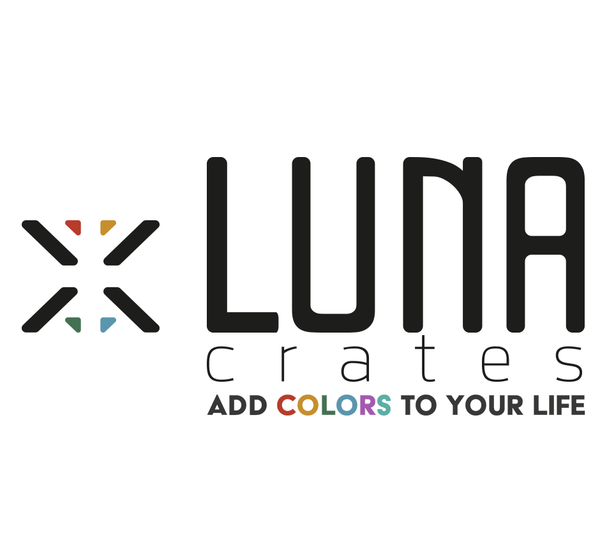
The Versatility of Utility Stackable Plastic Boxes
Share
The Versatility of Utility Stackable Plastic Boxes
In today's fast-paced and increasingly organized world, efficient storage solutions play a vital role in various settings. One such solution that has gained widespread popularity is the utility stackable plastic box. These boxes offer a versatile and practical way to store and organize items in homes, offices, warehouses, and more. In this article, we will explore the benefits and applications of utility stackable plastic boxes.
Benefits of Utility Stackable Plastic Boxes: Utility stackable plastic boxes come with numerous advantages that make them a preferred choice for storage needs. Firstly, their stackable design allows for efficient use of space. By vertically stacking these boxes, users can maximize their storage capacity while minimizing the footprint. This is particularly beneficial in situations where space is limited or when optimizing storage efficiency is a priority.
Furthermore, utility stackable plastic boxes are lightweight yet durable. Made from high-quality plastic materials, they offer excellent durability and resistance to impact, moisture, and other environmental factors. This makes them suitable for both indoor and outdoor use, ensuring the safety and protection of stored items.
Applications of Utility Stackable Plastic Boxes: The applications of utility stackable plastic boxes are vast and diverse. In residential settings, these boxes can be used to store seasonal clothing, toys, books, and other household items. Their stackable nature enables efficient organization, making it easier to locate and access stored belongings when needed.
In office environments, utility stackable plastic boxes prove invaluable for document storage, archiving, and office supply organization. Their stackable design allows for neat and systematic storage of files, reducing clutter and improving workflow efficiency.

Moreover, utility stackable plastic boxes find great use in warehouses, logistics centers, and retail stores. They provide an ideal solution for storing and transporting goods, ensuring optimal space utilization and convenient handling. The boxes can be easily labeled and stacked on pallets or shelving systems, streamlining inventory management and facilitating quick retrieval of items.
Utility stackable plastic boxes offer an array of benefits that make them a versatile storage solution across various domains. Their space-saving design, durability, and ease of use make them an ideal choice for both personal and professional storage needs. Whether it's organizing household items, managing office supplies, or streamlining warehouse operations, utility stackable plastic boxes have proven to be a reliable and efficient solution. With their practicality and versatility, these boxes are likely to continue gaining popularity as an essential storage tool in the years to come.

The Environmental Impact of Single-Use Plastic Boxes and Sustainable Alternatives
In recent years, there has been growing concern about the environmental impact of single-use plastic products. Among these, single-use plastic boxes have become a subject of scrutiny due to their contribution to plastic waste and pollution. In this article, we will delve into the environmental implications of single-use plastic boxes and explore sustainable alternatives that can help mitigate these issues.
The Problem with Single-Use Plastic Boxes: Single-use plastic boxes are commonly used for packaging and transporting various products. However, their short lifespan and limited reuse potential contribute to the mounting plastic waste problem. These boxes often end up in landfills, where they take hundreds of years to decompose, releasing harmful chemicals and microplastics into the environment.
Furthermore, the production of single-use plastic boxes involves the extraction of fossil fuels, energy-intensive manufacturing processes, and transportation, which contribute to greenhouse gas emissions and further exacerbate climate change. The detrimental impact of single-use plastic boxes on ecosystems and wildlife is also a concern, as marine animals often mistake plastic debris for food or become entangled in it.
Sustainable Alternatives: To address these environmental challenges, there is a growing need for sustainable alternatives to single-use plastic boxes. Several options are available that offer comparable functionality while minimizing environmental harm.
-
Reusable Plastic Boxes: Instead of single-use boxes, opting for reusable plastic boxes can significantly reduce plastic waste. These boxes are made from durable materials and are designed for multiple uses, making them a more sustainable choice. Users can return or exchange these boxes for further use, reducing the demand for new plastic production.
-
Biodegradable Boxes: Biodegradable boxes are an environmentally friendly alternative to traditional plastic boxes. These boxes are made from plant-based materials, such as cornstarch or sugarcane, which break down naturally over time. They offer similar functionality to plastic boxes but have a significantly lower environmental impact.
-
Recyclable Cardboard Boxes: Cardboard boxes are an excellent alternative to plastic for certain applications. They are biodegradable, recyclable, and often made from recycled materials. Cardboard boxes are widely used for packaging and transporting goods and can be easily disposed of in recycling systems.
-
Compostable Fiber-based Boxes: Boxes made from compostable fibers, such as bamboo or bagasse, are another sustainable option. These boxes are derived from renewable resources, and they can be composted at the end of their lifecycle, returning nutrients to the soil.
The environmental impact of single-use plastic boxes cannot be ignored. However, by adopting sustainable alternatives, we can reduce plastic waste, minimize pollution, and mitigate the ecological damage caused by these boxes. Reusable plastic boxes, biodegradable options, recyclable cardboard boxes, and compostable fiber-based boxes all provide viable alternatives that balance functionality with environmental responsibility. As individuals, businesses, and governments embrace these sustainable alternatives, we can collectively work towards a future where plastic waste is significantly reduced, preserving our planet for generations to come.
